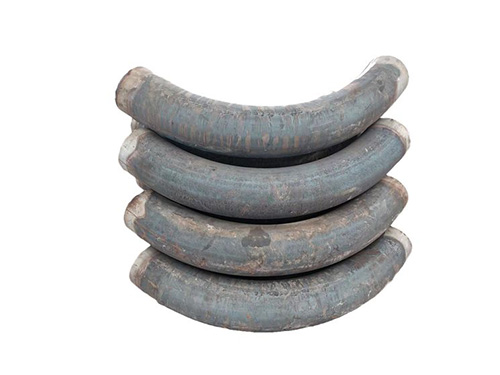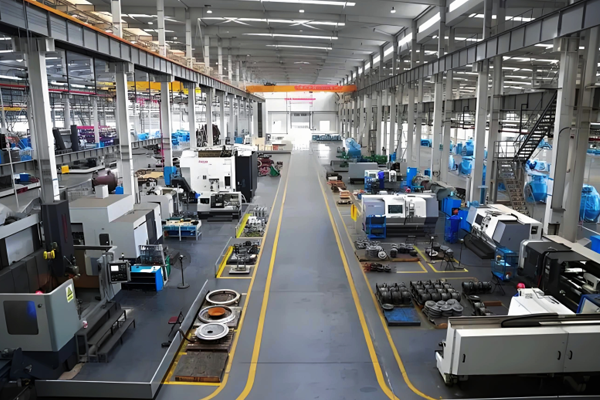
Hot Formed Bend
Hot formed bend is a type of pipe fitting that is formed by heating pipes at high temperatures and bending them using molds. It is mainly used to change the direction of pipelines (common angles are 90 °, 45 °, 180 °) and is widely used in medium and high voltage pipeline systems in industries such as petroleum, chemical, and power. Its core advantage lies in eliminating internal stress of the material through hot processing, ensuring that the mechanical properties of the bent part are basically the same as those of the straight pipe section, especially suitable for the forming of large-diameter and thick walled pipelines.
1、 Hot pressing process
The manufacturing process of hot pressed bent pipes requires strict control of temperature and pressure, and the core steps include:
Raw material pretreatment: Select seamless steel pipes or straight seam steel pipes as raw materials, cut them into specific lengths according to the bending radius (such as long radius 1.5D, short radius 1D), and remove surface oil stains and rust.
High temperature heating: The billet is sent into a heating furnace and heated to the forging temperature range of the material (about 850-1000 ℃ for carbon steel, 1050-1200 ℃ for stainless steel, and 900-1100 ℃ for alloy steel), ensuring that the pipe reaches a plastic state.
Mold bending: Place the hot pipe in a bending mold and apply axial thrust or radial pressure through a hydraulic press to bend the pipe along the curvature of the mold. Real time temperature monitoring is required during the bending process to avoid material embrittlement caused by cooling.
Heat treatment: After forming, annealing or normalizing treatment is carried out to eliminate internal stress caused by bending and prevent cracking during use. For alloy steel pipes, it is necessary to restore their high strength characteristics through quenching and tempering treatment (quenching+tempering).
Precision trimming: Cut and groove the port to ensure sealing when connected to the pipeline, and inspect internal defects through non-destructive testing (such as ultrasonic testing).
2、 Applicable materials and advantages
Hot pressed bent pipes are suitable for various metal materials, including carbon steel (such as Q235, 20 #), stainless steel (304, 316), alloy steel (12Cr1MoV, Cr5Mo), etc., especially for high-strength materials that are difficult to cold bend. Its core advantages are reflected in:
Stable mechanical properties: The plasticity of the material is improved at high temperatures, and the wall thickness at the bending part is uniform (deviation ≤ 10%). The difference in tensile strength and impact toughness compared to the base material is less than 5%, and it can withstand high pressure (≤ 40MPa) and high temperature (≤ 600 ℃) working conditions.
Suitable for large-sized pipelines: capable of processing large-diameter (DN200-DN3000) and thick walled (≥ 10mm) pipes, solving the problems of wrinkles and cracking that are prone to occur in cold bending processes.
Low flow resistance: The inner wall is smooth, and the bending radius is designed reasonably (the pressure loss of long radius bends is 30% lower than that of short radius bends), reducing the energy consumption of medium transportation.
3、 Specification standards and application scenarios
The specifications of hot pressed bent pipes must comply with international standards such as ASME B16.9 (American standard) and GB/T 12459 (National standard). Common parameters include:
Angle: 90 ° (most commonly used), 45 °, 180 ° (U-bend), special angles can be customized.
Bending radius: The long radius (R=1.5D) is suitable for systems with low resistance requirements, while the short radius (R=1D) is used in spatially constrained scenarios.
Pressure rating: Suitable for wall thickness grades such as Sch40, Sch80, XXS, etc., to meet the requirements of medium and high pressure pipelines.
Its typical application scenarios include:
Process pipelines of petroleum refining units (such as oil and gas pipelines of catalytic cracking units);
High temperature steam pipelines in thermal power plants (12Cr1MoV material hot pressed bent pipes can withstand high temperatures of 540 ℃);
The turning point of municipal natural gas long-distance pipelines (large-diameter hot pressed bends to reduce leakage risks).
4、 Precautions
Temperature control: Different materials need to be matched with specific heating temperatures (such as carbon steel to avoid exceeding 1050 ℃ to prevent grain coarsening).
Anti corrosion treatment: Carbon steel hot pressed bent pipes need to be galvanized or painted, while stainless steel needs to be acid washed and passivated to restore corrosion resistance.
Installation adaptation: When welding with pipelines, the same material welding rod should be used and post weld heat treatment should be carried out to ensure joint strength.
Hot pressed bend pipes, with their excellent forming quality and mechanical properties, have become key components for achieving complex routing in industrial pipeline systems. Their process stability makes their reliability far superior to cold bent or welded bend pipes under high pressure and high temperature conditions.

+86-15533769121

Jango

jango@yuntaopiping.com

Beixiaozhuangzi Industrial Zone, Mengcun Hui Autonomous County
Copyright © 2025-2026 http://www.yuntaopiping.com. All Rights Reserved Yuntao Piping Group.,Ltd.Copyright



